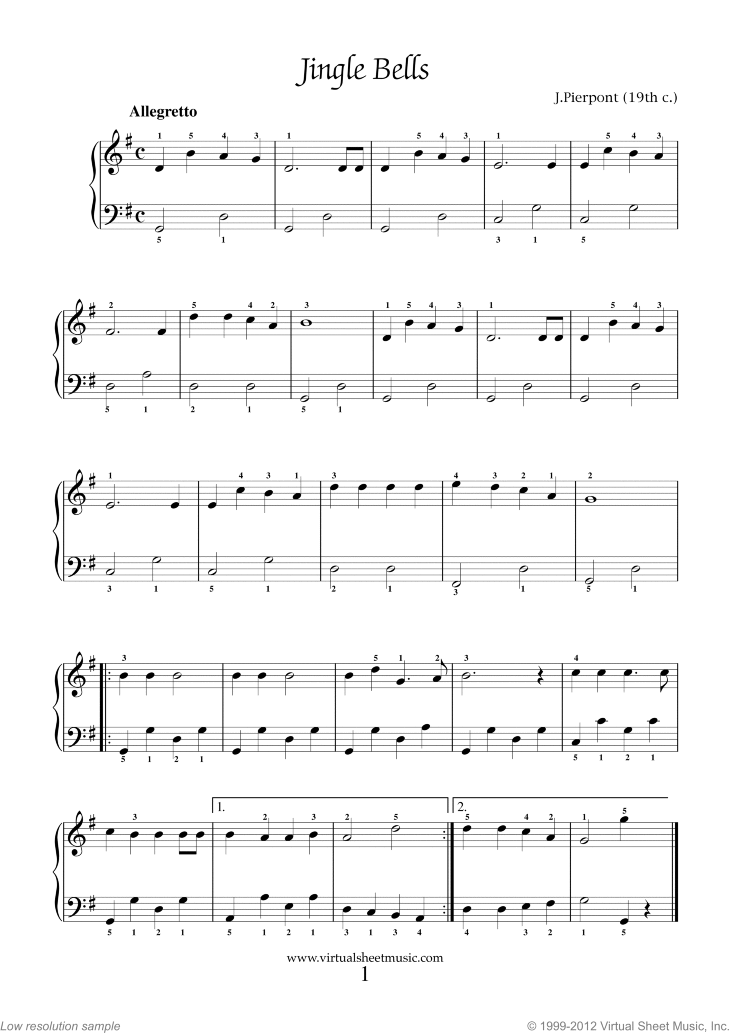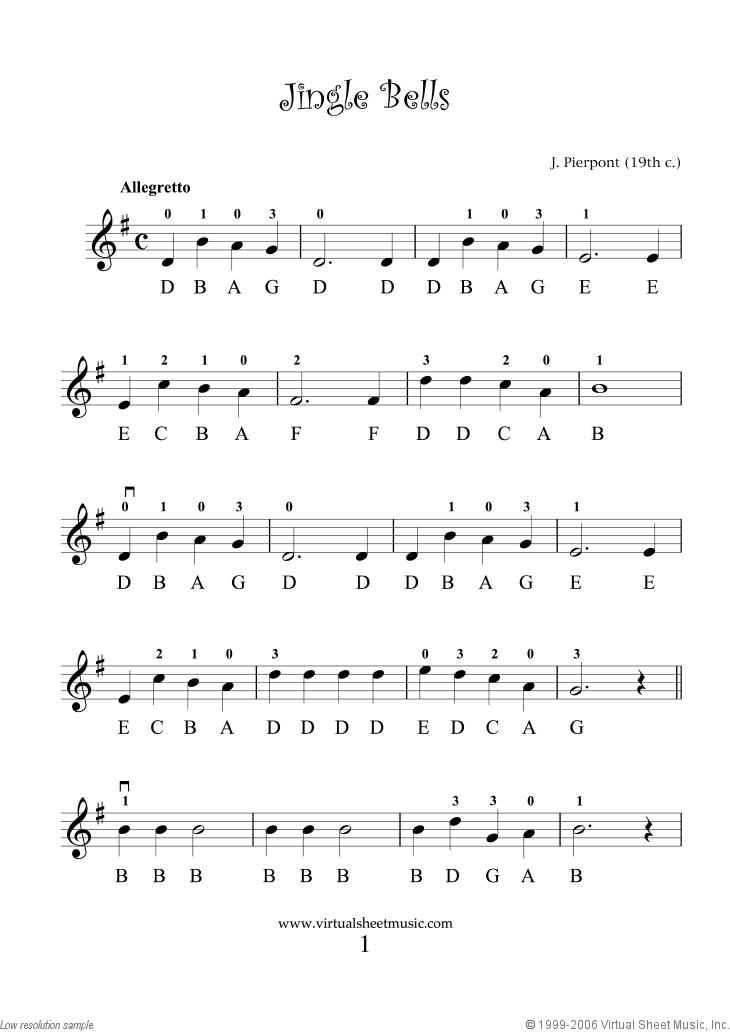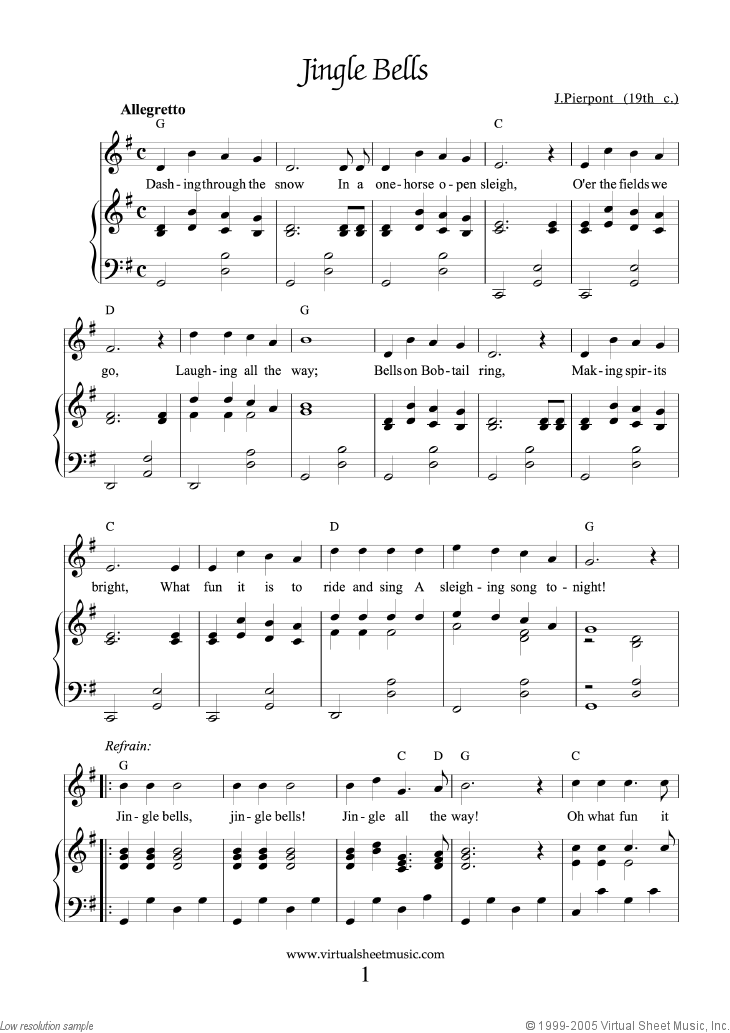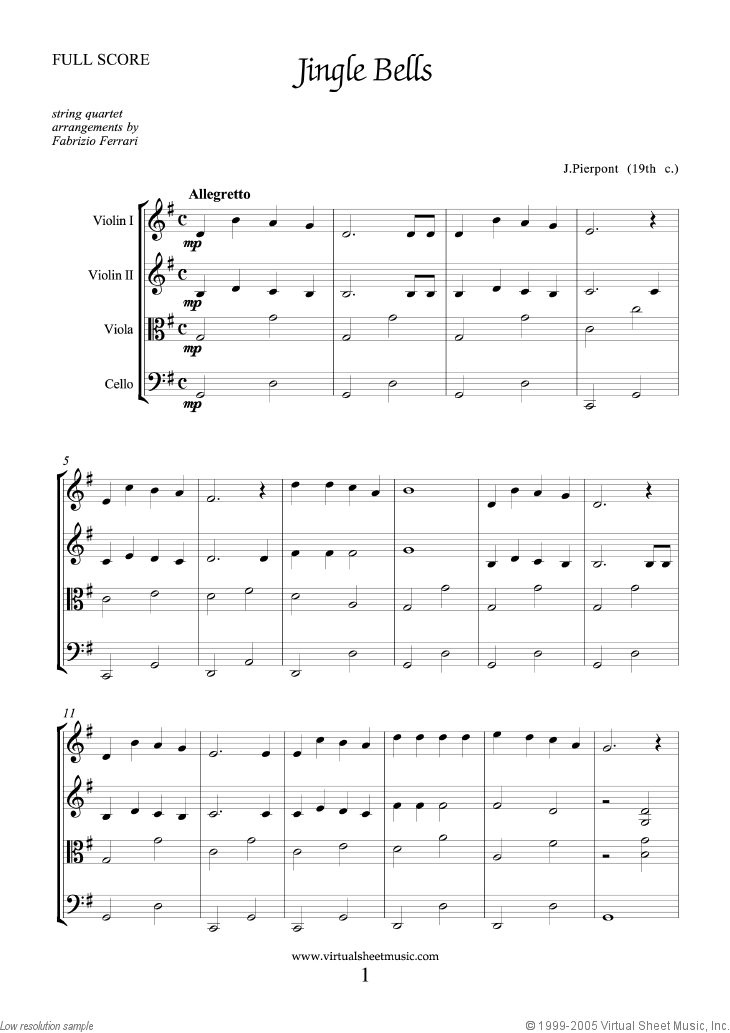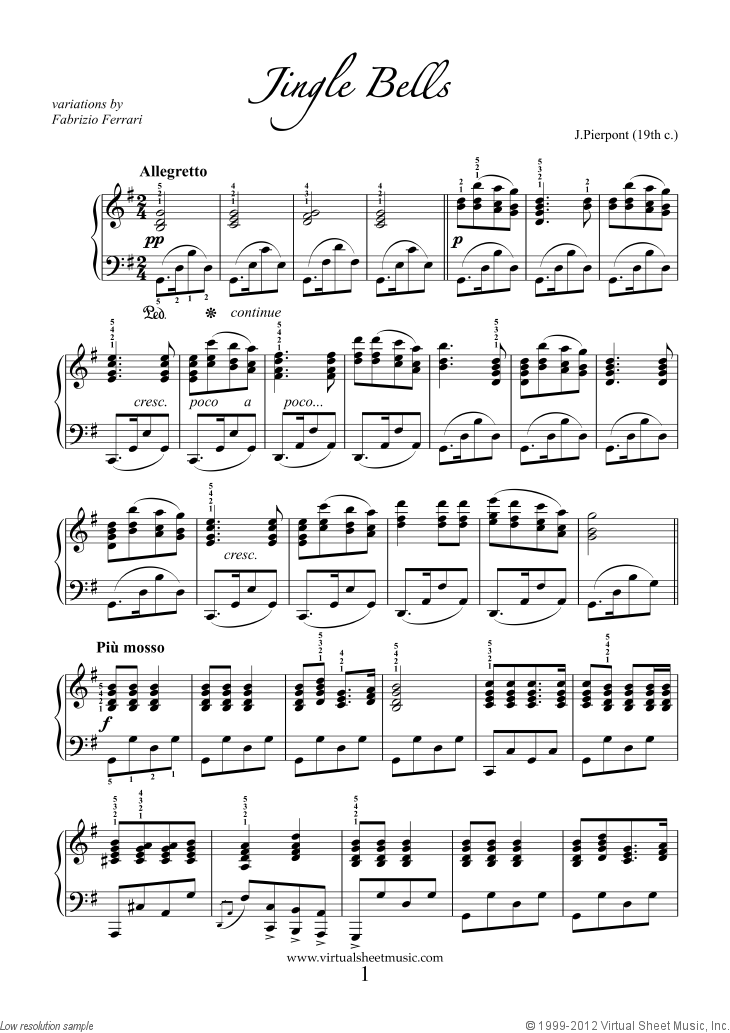Christmas Performance Guide by Fabrizio Ferrari | ||||||||||||||||||||||||||||||||
|
November 18, 2016
Hello and thank you for coming!
What's this guide about?It's simple. Just ask yourself: How to get ready for a dazzling, impressive Christmas music performance? What music should you play? What's the best way to practice for the performance? How can you avoid freaking out in front of the audience? Well... I'm here to guide you and answer your questions with this fun, practical manual that I'm sure will make your Christmas performance a blast! It's important to remember that while I've written these tips for you with Christmas music and Virtual Sheet Music's extensive offerings in mind, you can actually apply them anytime, anywhere, no matter what you're playing. So, let's get started! The three steps for an outstanding Christmas performance
STEP 1: Find the right sheet music for youThe first step is actually to find the right sheet music for you. What does that mean? Well, you should find music that fits your skills. If you are a beginner, better to choose "beginner" (easy or beginner) music for you. And if you are an advanced player, it's also important to choose music that helps you to showcase your skills, and is enjoyably challenging for you to play. We have hundreds of different versions of popular Christmas carols, so it's important to assess your needs and skills first before choosing what to play. This will take just a minute. To make it simple, if you're an intermediate player, music for an "intermediate skill level" (medium skill level) should probably work best; whereas if you're a more advanced player, advanced level music (high skill level) would be a great choice. With all the Christmas Sheet Music we have, it's hard to choose! Not sure if you're a beginner, intermediate, or advanced player? To help you answer this question, have a look at the sample below from "We Wish You a Merry Christmas", and decide if this is too simple or just right for you. You can try to play it with your instrument to better assess your level. If you play the piano, try to play it with just your right hand. If you see chords and play a monodic instrument such as a violin, flute or clarinet, try to play just the melody (the top note of the chord). How's the music below for you? 
Recommended Music for Beginners ← This is the right music for you! * This is the right music for you! *If you are a beginner, you might choose the music recommended in this section. These are selected collections that may be appropriate for grades K through 5 (children from 6 to 10 years old), or adult/young beginners, depending on the level of the player. And yes, if you are an adult beginner, this music is for you as well! IMPORTANT TO REMEMBER: Around the site, all beginner Christmas music is marked as "beginner". Click the samples below to enlarge them, then try to play them. If you are comfortable playing these samples, you may want to checkout the recommended titles below... otherwise, scroll down the page for more advanced Christmas music. Samples:
If the samples above seem to fit your skills, you may be interested in the free Jingle Bells below:
Recommended Music for Intermediate Players ← This is the right music for you! * This is the right music for you! *If you're an intermediate player, this is your section. These are selected collections that may be appropriate for grades 5 and up (children from 10 years up), depending on the level of the player. If you're an adult intermediate player, this music is for you as well!! IMPORTANT TO REMEMBER: Around the site, all intermediate Christmas music is marked as EASY or INTERMEDIATE. Click the samples below to enlarge them, then try to play them. Here too, if you are comfortable playing these samples, you may want to checkout the recommended titles below... otherwise, scroll down the page for more advanced Christmas music. Samples:
If the samples above seem to fit your skills, you may be interested in the free titles below:
Recommended Music for Advanced Players ← This is the right music for you! * This is the right music for you! *If you're an advanced player (even a Pro), this is your section. These are special collections that may be appropriate for grades 10 and up, depending on the level of the player. If you are an adult advanced player, this music is for you as well, of course! All advanced Christmas carols are amusing variations on popular Christmas carols I wrote a while ago, and I really hope you'll enjoy them! IMPORTANT TO REMEMBER: Around the site, all advanced Christmas music is marked as HIGH. Click the samples below to enlarge them, then try to play them. Here too, if you are comfortable playing these samples, you may want to checkout the recommended titles below. Samples:
If the samples above seem to fit your skills, you may be interested in the free advanced Silent Night below:
Not finding the right music for you?If you have browsed through our extensive list of Christmas Carols and still can't find anything that fits your needs (maybe because your specific instrument is not there, or because the music register is too high or too low for you), you can always use the Interactive Sheet Music feature on selected titles. Interactive Sheet Music allows you to transpose the music and change the instrument. You can also practice with the interactive viewer by changing the music tempo according to your needs (see the practice section below). If an item includes Interactive Sheet Music, you'll see this clearly indicated in the item description. And of course, if you'd rather have a custom-made collection, please submit your request and we'll do our best to make it for you! STEP 2: How to practice your musicThe secret to practice is simple: Have fun while doing it. Yes, you need to have fun to learn something really well. This goes for anything in life, not just music. So... what's the best way to learn music, practice, and still have fun? Well, one possibility is to play music with someone else, or at least have the feeling of playing music with another person, rather than playing and practicing all by yourself. So, if you know someone who might like to play with you, this could be a great option for you. For example, if you play an instrument other than the piano and you know someone else who plays piano, why not ask them to accompany you? Or... do you know anyone else who also plays your instrument? Try playing some duets, and have fun together! Of course if you are part of an ensemble or know more musicians, you could put together a string quartet, a string trio, or any other fun combination of instruments. So many possibilities! But what if you don't know anyone else who can play music with you? Well... I have an answer for you. You actually have different options.
OPTION 1: Use Mp3 accompaniment filesMp3 accompaniment files are simple Mp3 audio files that include the piano accompaniment part, or any other instruments included in an ensemble. For example, if you want to play a carol for violin and piano, you can use accompaniment files that play the piano part for you, and you can play along on your violin. Or, if you want to play a duet for two flutes, you can have accompaniment files for the first flute or second flute part, and then play along. Here is an example for you. Let's say you want to play Silent Night for violin and piano. Once you're on that page, you can first download the PDF of it (just click this button: There are always three versions of Mp3 accompaniment files: A clean version at the right tempo; a second version with a metronome at the right tempo; and a third version with a metronome at a slower tempo, which is very useful for practice purposes. Just choose the version you want, and you are ready to go! OPTION 2: Use MIDI filesWhat are MIDI files? Well, if you've been an active musician since the 80's or 90's, you should well-know what they are. MIDI files are very simple "data" files that include music notes, and can be played by special "MIDI readers" or "music players." Some keyboards also read MIDI files. MIDI files offer flexibility that standard Mp3 files cannot, such as the ability to easily change the tempo, transpose the music, and change the instruments. So, how do you play MIDI files? Well, while we are currently in the process of putting together an online version of a MIDI player for you, you can certainly find either mobile applications or computer applications that read MIDI files. You can find some free MIDI players listed on this page of ours, or just search Google for MIDI player and you'll find hundreds of players to try. Many are free, but the most advanced players are available for a price. OPTION 3: Use Interactive Sheet MusicInteractive Sheet Music is available with most of the music offered on Virtual Sheet Music. Individual item descriptions clearly indicate whether this feature is available for a particular title that interests you. For example, let's take again the Silent Night for violin and piano I mentioned above. It includes interactive sheet music presented via the Virtual Sheet Music Playground™ system that allows you to interact with the sheet music within your web browser. For example, you can transpose the music, follow the music while it is playing, and more. So, to access Interactive Sheet Music for Silent Night for violin and piano, just click the Open in Playground button if present, or the simple interactive button ( Once there, you can play the music by following it on the screen, change the tempo, and much more. Besides the Scorch® system, we also offer Interactive Sheet Music with NoteFlight™, used by other publishers such as Hal Leonard®. You can try NoteFlight™ with popular Christmas music, such as Christmas Time by Bryan Adams and Jim Vallance. OPTION 4: Use Piano Accompaniment Videos™Piano Accompaniment Videos™ is a new, exclusive product by Virtual Sheet Music® that we launched a few months ago. It features a real, professional pianist playing the piano accompaniment part, with the solo instrument sheet music part superimposed on the video itself, synchronized with the piano accompaniment. This exciting feature gives you the amazing opportunity to easily play along by reading the music from the video itself, all while being accompanied by a world-class pianist. Furthermore, these Piano Accompaniment Videos™ use a custom-made video player that allows you to speed up or slow down the video to your liking. You can also setup loops and markers for practice purposes. We even know of people using Piano Accompaniment Videos™ for real, live performances! Try Piano Accompaniment Videos™ with the Silent Night for voice, piano or other instruments demo, and find all the available accompaniment videos on their dedicated page. STEP 3: Get ready for the performanceA while ago, I wrote the following "Christmas Day - Performance Tips" for our Virtual Sheet Music Newsletter, and these tips were very well-received by many musicians. These performance tips were meant to give both beginners and more advanced players a "path" to follow to impress their audience, no matter the skill level of the musician. So, here I am again with these tips and more! But before jumping ahead and reading about the performance, be sure to follow the practice tips above to feel fully prepared and confident for the "real" performance. A real performance can be in front of your friends, family, or whoever you hope to delight! TIP 1: Afraid to perform? Introduce your music!Anyone can be afraid or nervous to perform in front of an audience of strangers, a group of friends, or even a mother or aunt. Why? Because you are "demonstrating" to your audience that you are capable of playing that piece of music you've practiced so much during the previous weeks. And that's completely normal. Professionals also get nervous when they perform in front of spectators, but you have an option professionals usually don't have: the opportunity to talk to your audience. So, here's a tip to try before you start playing. Talk to your audience and explain what you are going to play. Find out more about the composition you are going to perform (wikipedia.com is a good place to start), and then share some information about the piece with your audience. Discussing the piece also allows your nerves to relax, letting you to establish a "comfortable" relationship with your audience that will greatly benefit your recital. And your audience will thank you for the "extra" information! Also, locate the passages in the piece that are difficult to perform and prepare your audience for those passages. Tell them why that certain passage is difficult to play on your instrument; they'll be interested to know that. You can also tell them more about your instrument. The audience will be more interested and appreciate your performance even more. Here is an example for introducing "Silent Night" to your audience:
TIP 2: Set the "tempo" before you start playing.When you are ready to play your piece, don't make the mistake many beginners make by starting right away without even thinking! Take your time, look at the score, put your instrument in place (or you hands on it) and count one measure evenly in your mind. This is the "tempo." If the piece has a 4/4 time signature, count "1-2-3-4" in your mind, then start to play. If the piece is in 3/4, count "1-2-3" in your mind and then start to play, and so on. Counting is so very important. It allows your brain to "synchronize" with the music and everything flows naturally. VERY IMPORTANT TIP: Once you start to play, keep counting the tempo in your mind until the very end of the last measure of the piece! The amazing thing about counting in your mind is that after a while you no longer have to think about it. You will begin to play everything with a sort of "natural" metronome in your mind that is always ticking for you! By counting your performance, you will sound like a professional. Mp3 accompaniment files (provided with any item for solo instrument and piano) can help nicely to learn to play "in tempo": Check out this other video by Robert Estrin about "Taking your Time" during performance. TIP 3: Finish your performance with a great "finale."Finale in Italian means "the end" of something. In music, it means the end of the music, and it is very, very important. A musical finale is the farewell of the musician! It's what remains in the minds of your audience...so you need to make it memorable! But, how? How do you impress your audience and leave them with the wonderful memory of your "fantastic" performance? Here are three techniques professionals know and use: 1. Make the finale grandioso! Grandioso in Italian means: "really great." So...play it great! If the piece ends with a forte as a dynamic, be sure to make a big deal of the end. (If you don't know what forte means, it is the "f" or "ff" sign found on the score that tells you to play "loud" or "very loud.") But how do you make a finale even "greater" than what's already written on the music? By simply "slowing" or "accelerating" the tempo, in addition to playing it forte. Sometimes changes of tempo are already written on the music with abbreviations like rall. (which stands for rallentando — in Italian, "slowing down") or accel. (which stands for "accelerando" — meaning "get faster" in Italian). Even if it is not written on the music, you are still permitted to do it to bring the music to a satisfying conclusion. 2. Make the finale "never ending" If the piece ends with a piano or pianissimo dynamic, allow the last sound to disappear into "nothingness." And don't take your hands (or your mouth, if you play a wind instrument) off the instrument until a number of "imaginary" measures have passed in your mind. Your audience will think that the music has not quite finished yet, leaving them "feeling" like there is something more after the end. By doing that, your listeners will surely ask you for an encore! 3. The right gesture at the right moment Gestures, of course, can help with the finale. A wide final gesture or an "accelerating and enlarging" gesture during the last few measures can help push your finale up to the stars and impress your audience more then ever. But be careful! What makes the final gesture for a beginner different from a professional is the "timing" and the choice of the gesture according to the kind of piece played. You must perform your gestures at the right moment and use the right gesture with the right piece. Not too early and not too late, and not to wide or too narrow. It's not as hard as it sounds. Here are some easy rules to follow: - If the piece ends with a grandioso finale (see point 1 above) that slows the tempo down, you may want to work on "widening" your gesture exactly when the slowing down begins. If you begin to enlarge your movements and expand your actions too early, you may reveal and blow your great finale well before the end. Also, if you expand your actions too early, you have no room to expand it later, causing your finale to fall flat...what a shame! So, begin to expand your motion when the rallentando begins. That way your gesture will be "synchronized" with the tempo and the end will be simply perfect. - If the piece ends with a grandioso finale with an accelerando, you may want to work on "narrowing" your gestures exactly when the acceleration begins. Here too, don't start narrowing too early. Begin around two to three bars before the end, when the accel. begins. The best motion to narrow your gesture is the circular one; it's much easier to handle than any other kind of motion. - If the piece ends with a "never ending" effect (see point 2 above), the gesture may be applied when the sound completely disappears — or just a few seconds after that. Depending on the instrument you play, you can simply release your hands slowly, close your eyes or hold your breath a little bit longer until you have no more air to blow out. On stringed instruments, such as the violin, viola, cello and double bass, you can keep your bow on the strings for two to three seconds after the sound has completely stopped. There are many more tips professionals know, but, in my opinion, the tips discussed here are some of the most important for creating a magical performance and certainly the ones that make the biggest difference. Finally, here are a few more short, easy-to-understand videos that may help you perform your best this holiday season: An important tip to gain more appreciation from your audience. Released on September 3, 2014 Tips for improving your musical performance through audience engagement. Released on August 20, 2014 In this video, Robert shows you how to hide mistakes that could occur during performance. Released on August 6, 2014 An important tip for increasing audience engagement. Released on July 30, 2014 If you play in front of an audience, this video is for you. Released on July 16, 2014 Practical tips for an ''almost'' perfect performance. Released on August 13, 2014 Practical tips to get ready to play in any kind of acoustics. Released on August 27, 2014 ConclusionWell, if you have read through this whole guide, I applaud your efforts and attentiveness! I'm sure your performance will be outstanding, and will make both you and your audience very happy. DON'T MISS THIS: We'd really like to see you in action playing the above Christmas Carols! So, please submit your performance videos to us by uploading them on YouTube, then sending the link to our customer support email address: support@virtualsheetmusic.com Or contact us on FaceBook, X or Instagram. We'll be delighted to listen to your performance, and some may even be featured on this page! And of course, please feel free to leave your comments and thoughts in the comments section below. I always enjoy hearing from you. Happy Holidays! Fabrizio Ferrari, CEO violinist and music composer Comments or Questions
Comments or Questions: Paul Will on May 15, 2017 @2:26 pm PST
Fantastic guide, thank you so much!
I'll be sure to apply these incredible rules to my next performance. Jose Luis * VSM MEMBER * on December 4, 2016 @11:16 am PST
De Hola, Desde Que les conoci, estoy muy contento y muy agradecido de Sus Consejos, Pues soy novato y estoy aprendiendo con ustedes, muchas gracias.
Solo decirles que pena Que sus paginas sin Vengan en Español, ya Que somos muchos los Millones de Personas de habla Ispana. Feliz Navidad para Todos ustedes Y Sus Familias, Salud y suerte. José Luis Calderón de la Barca Fabrizio Ferrari - moderator and CEO, on December 5, 2016 @10:20 am PST
Dear Jose, you are very welcome! Thank you for your kind message. Despite I am unable to write in Spanish, I could understand the meaning of your posting, Italian helps!
Well, I know, we'd like to offer our pages in several different languages, and maybe one day we'll translate them. In any case, please, let your ideas coming, and if you have any specific "guide" you'd like to see published on VSM, please, let me know! Thank you again.  Related PagesBecome a Member!"Wonderful! This is the best site I have seen of its kind! Well worth the minuscule amount for the Membership." Claire Eldred professional pianist |
- Instruments
- Piano
- Guitar
- Voice
- Violin
- Flute
- Ensembles
- Genres
- Specials
- Free Stuff
- Browse



